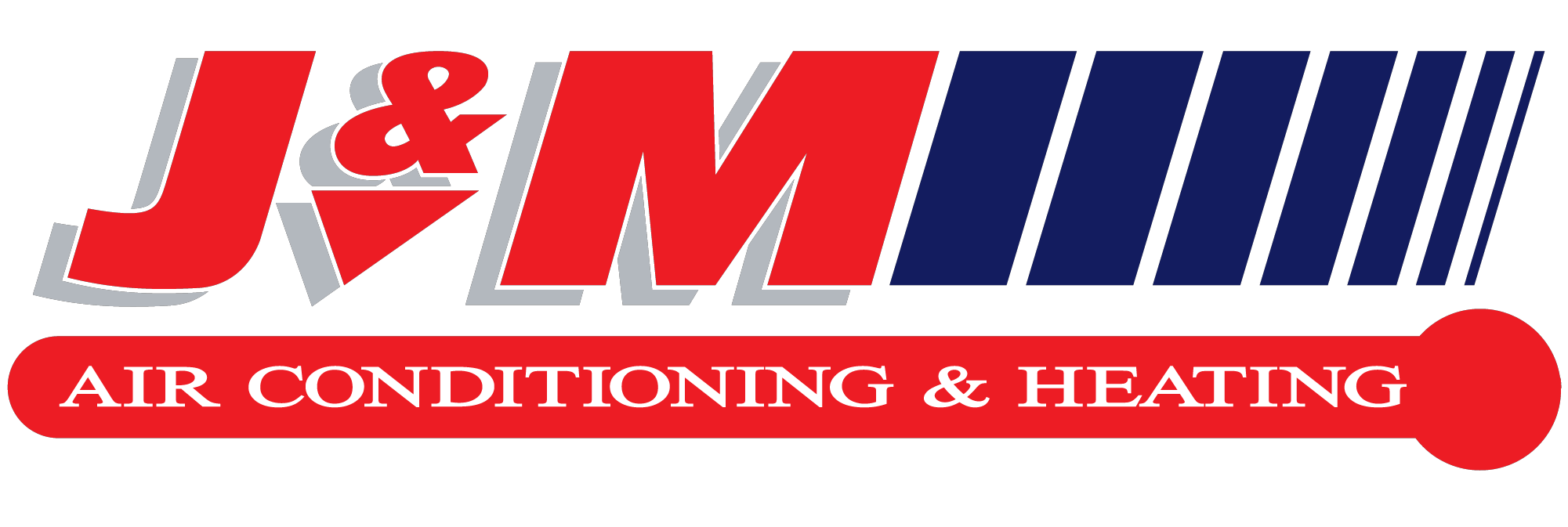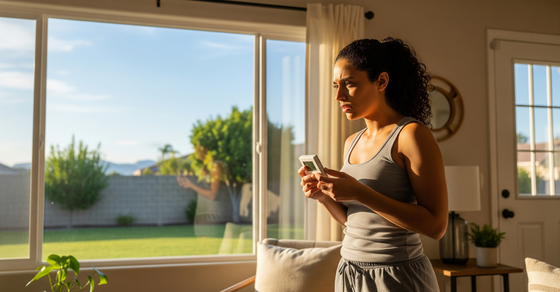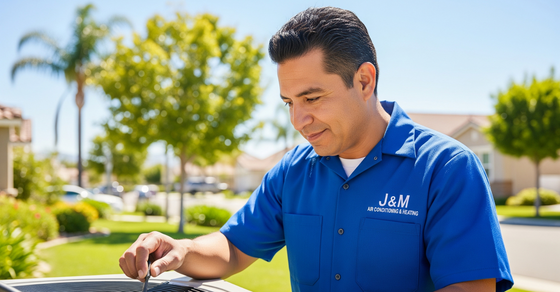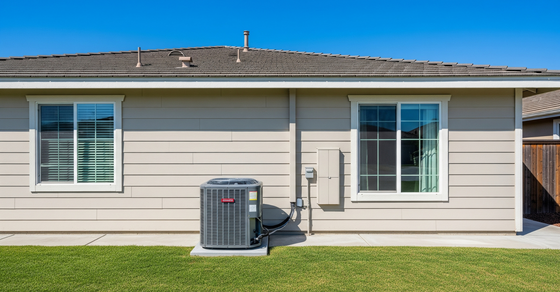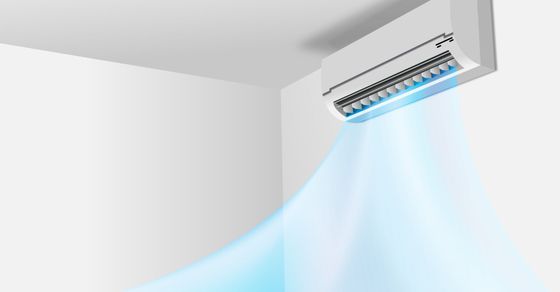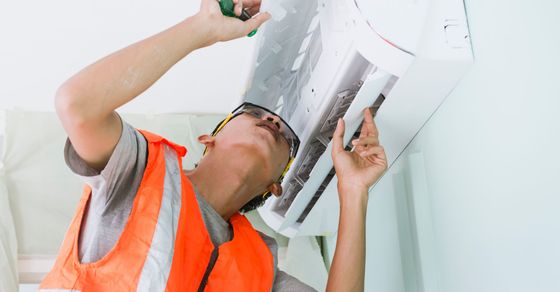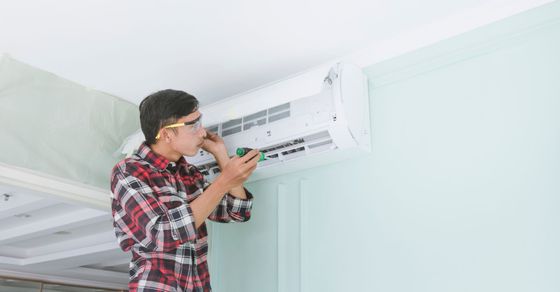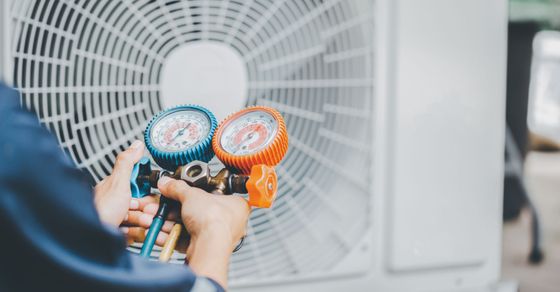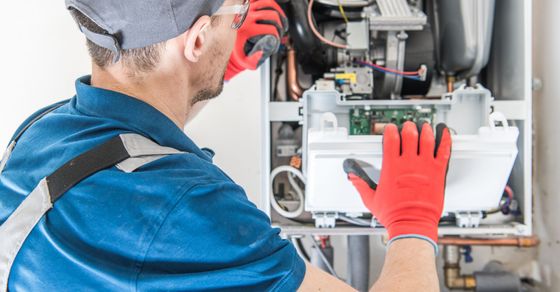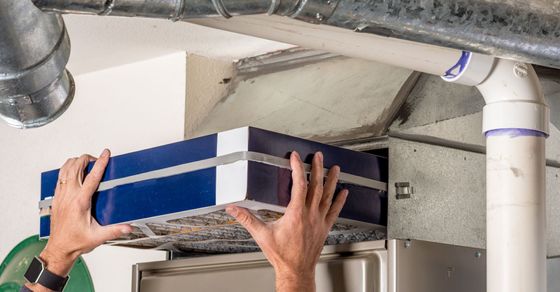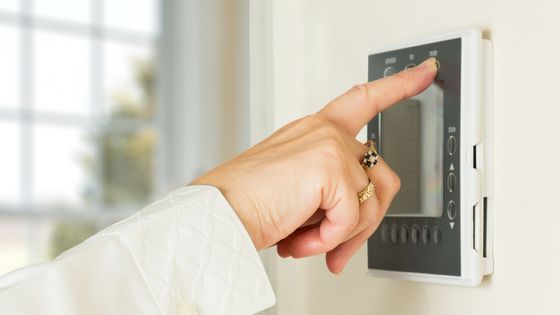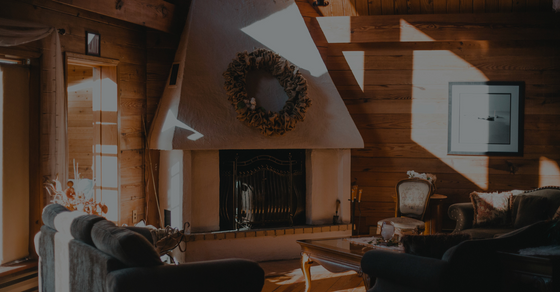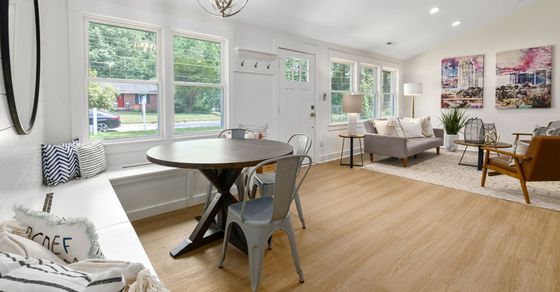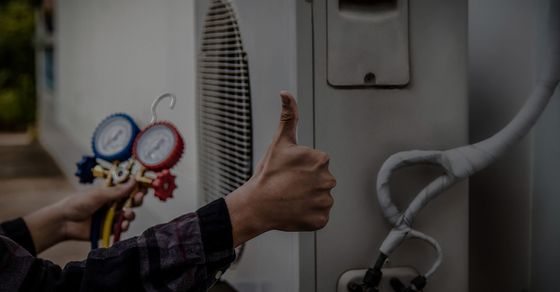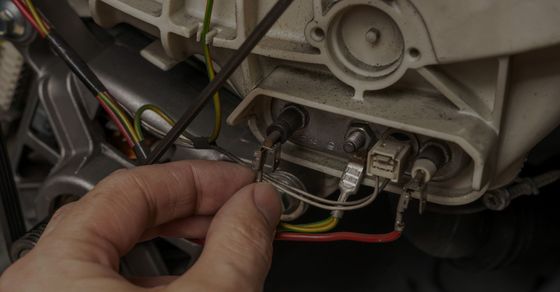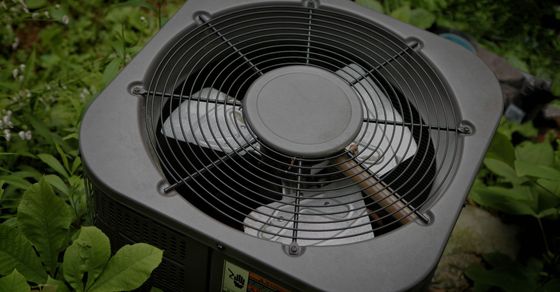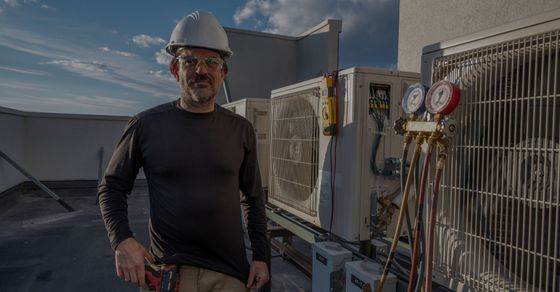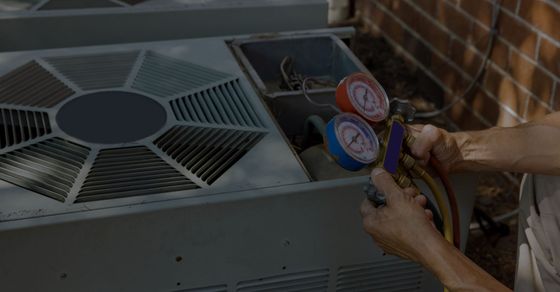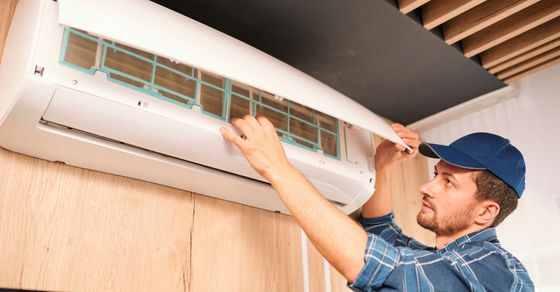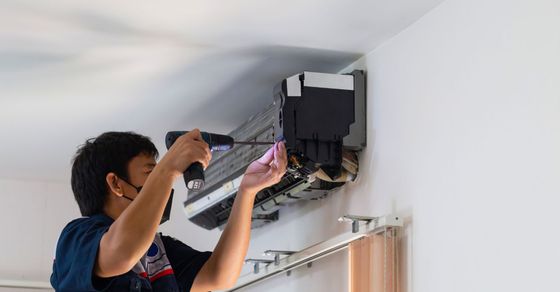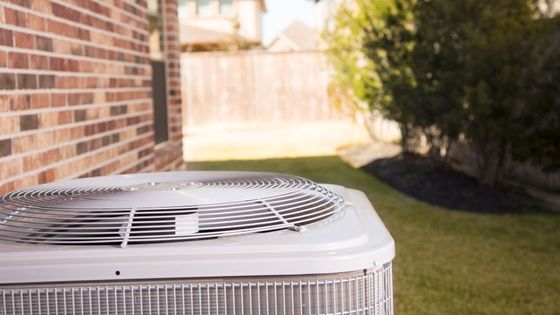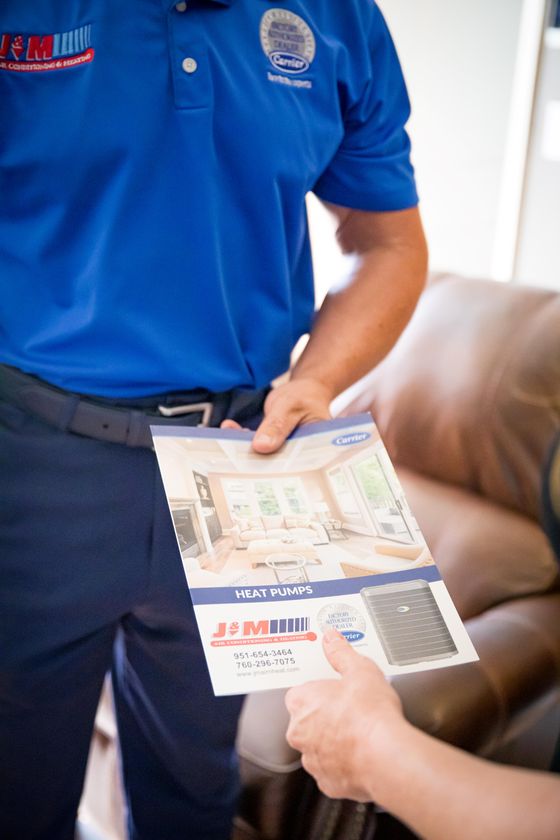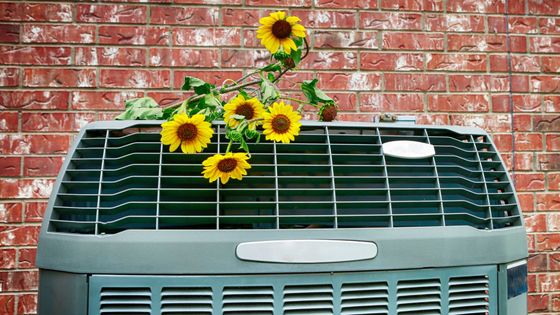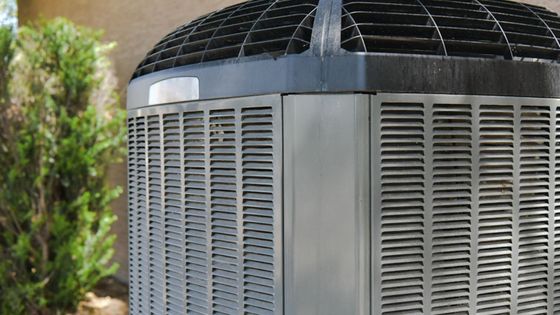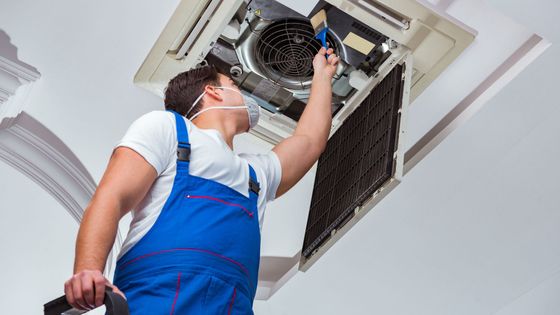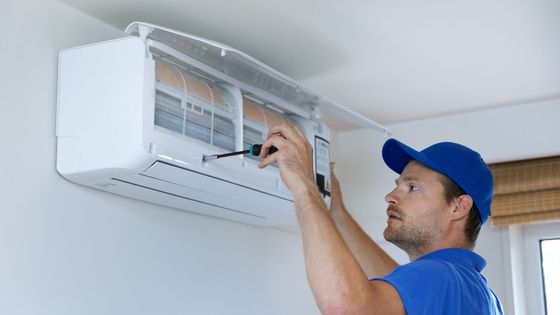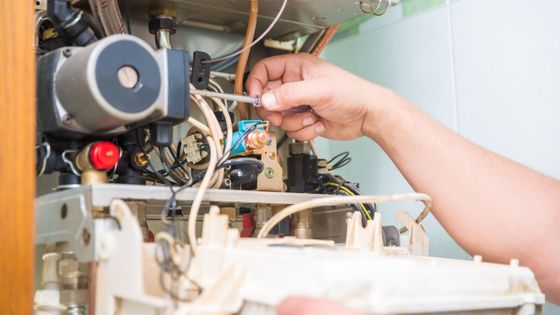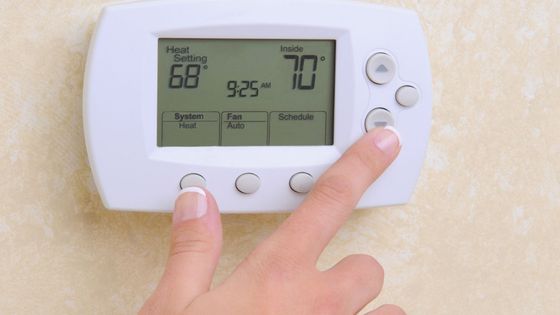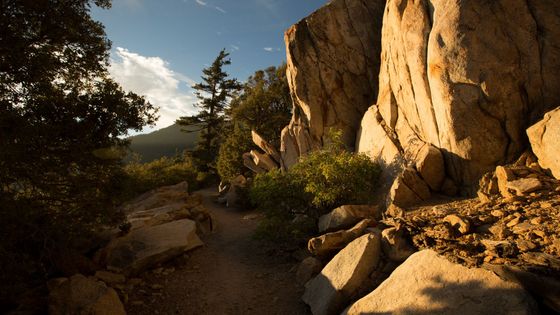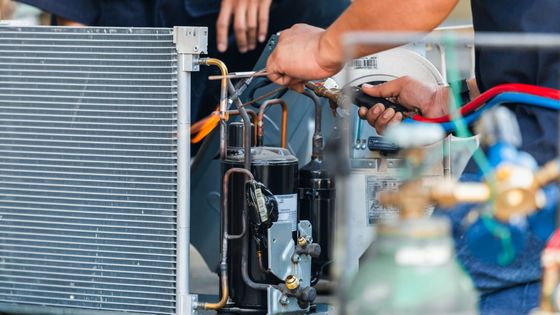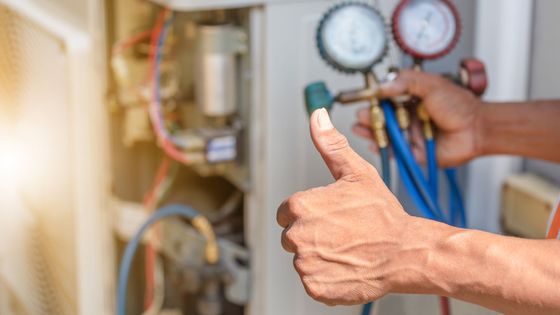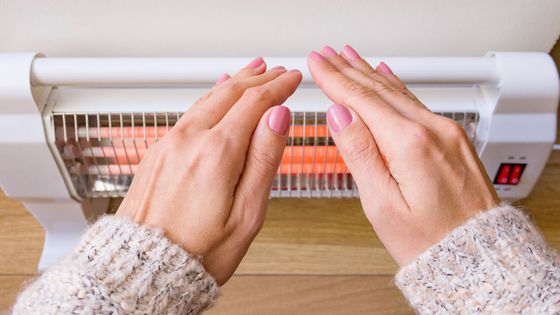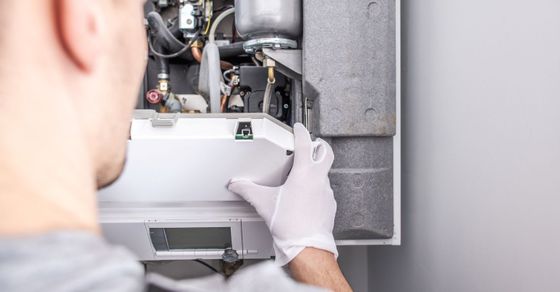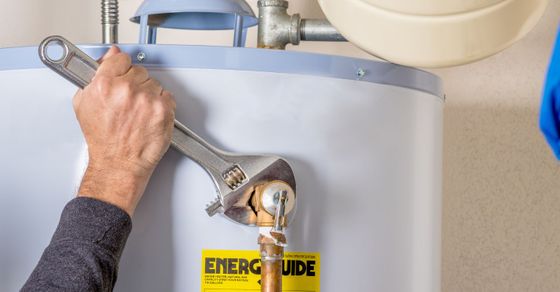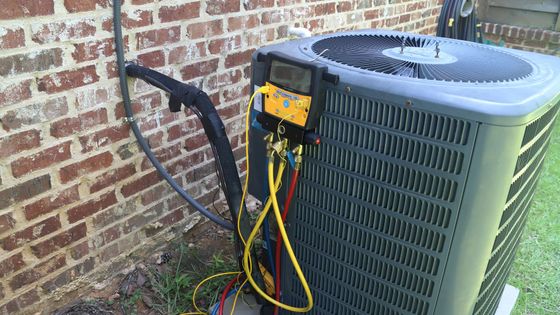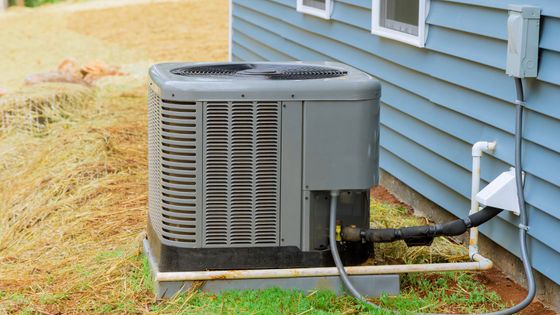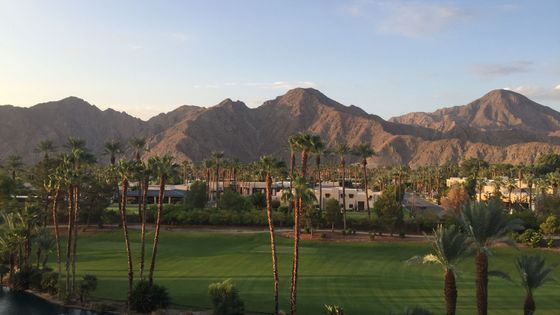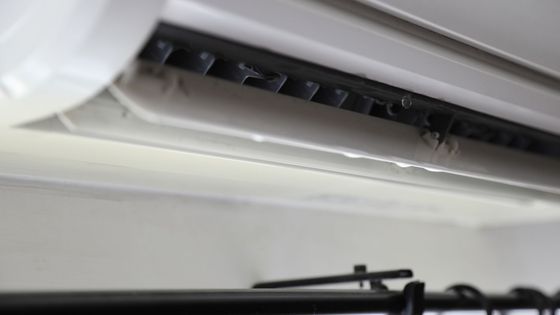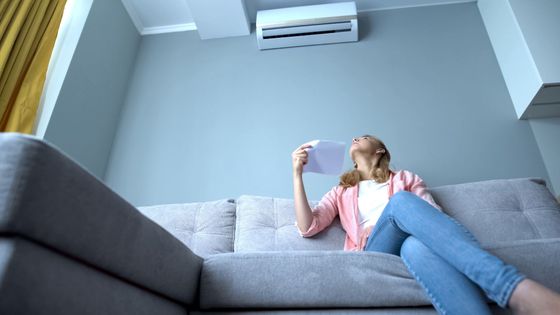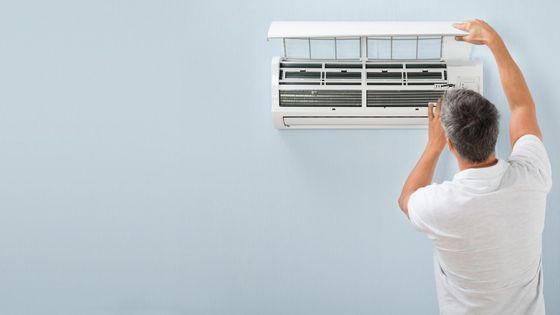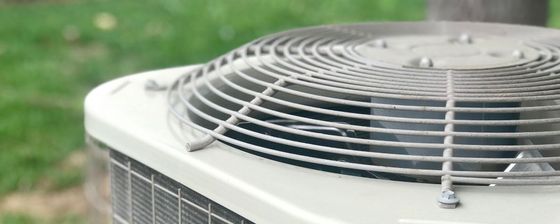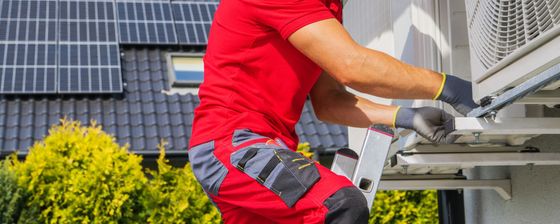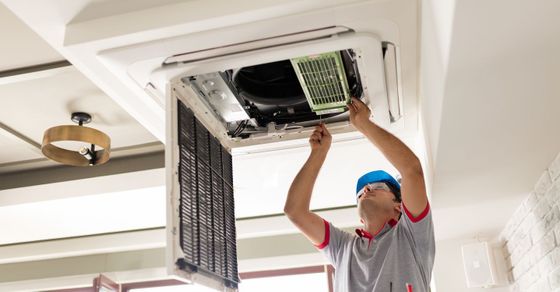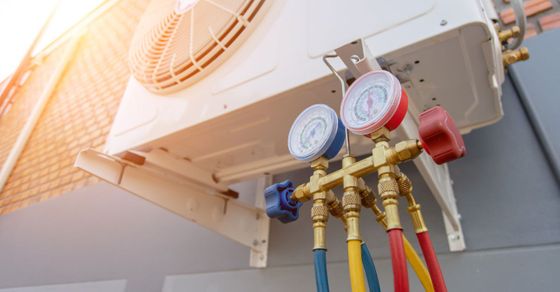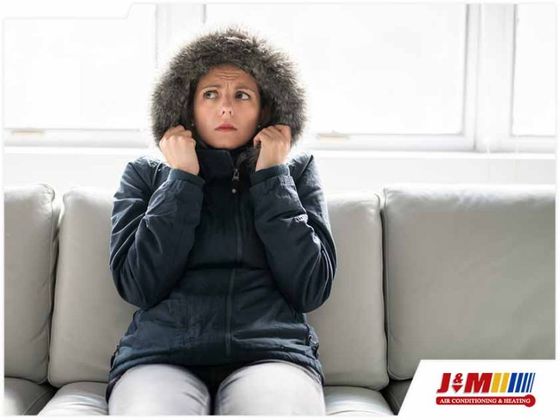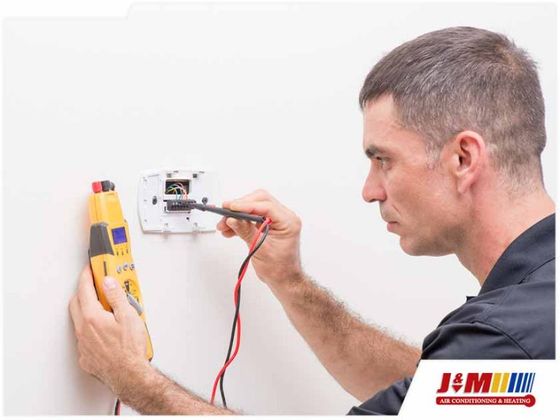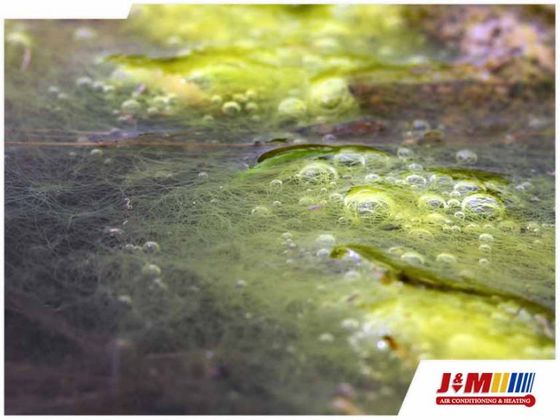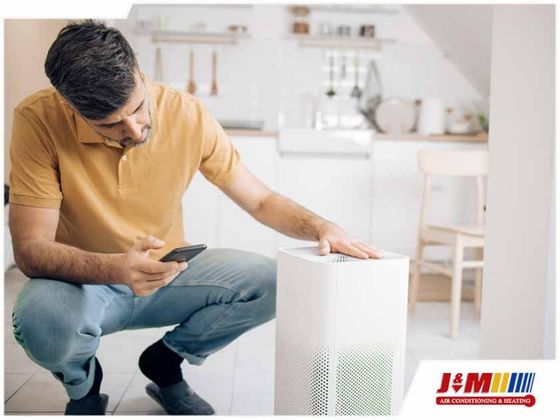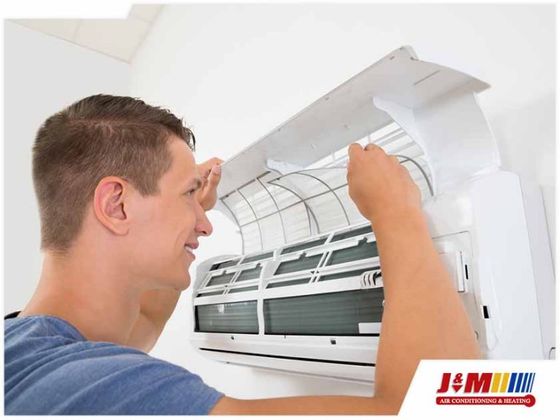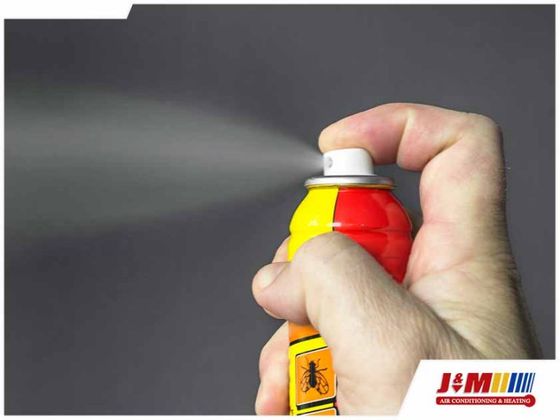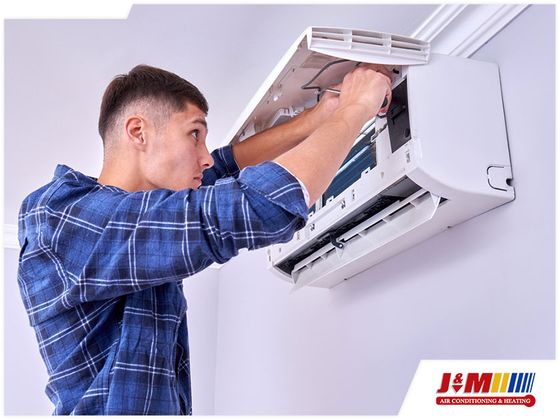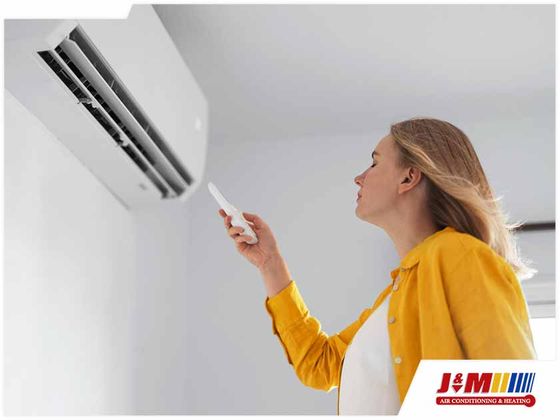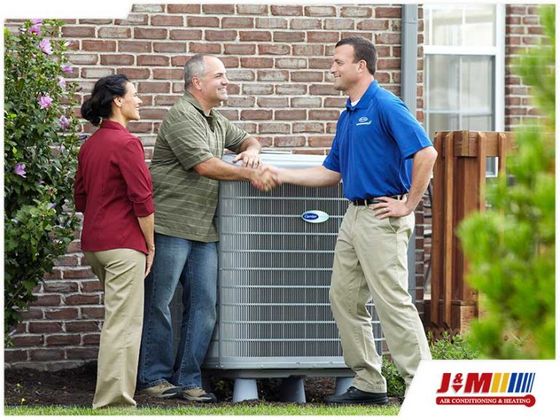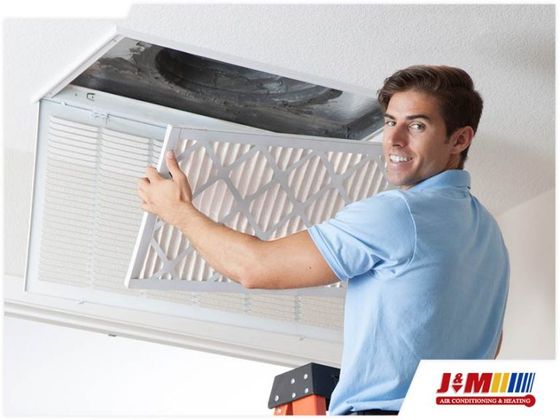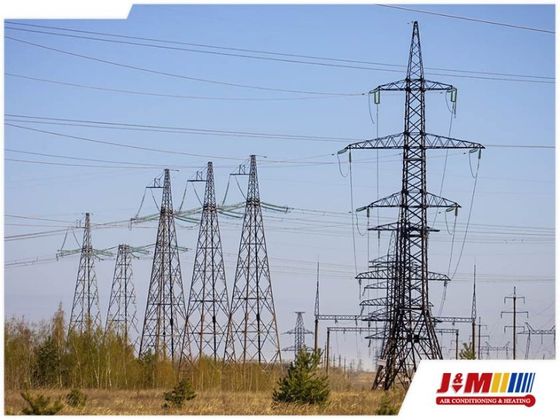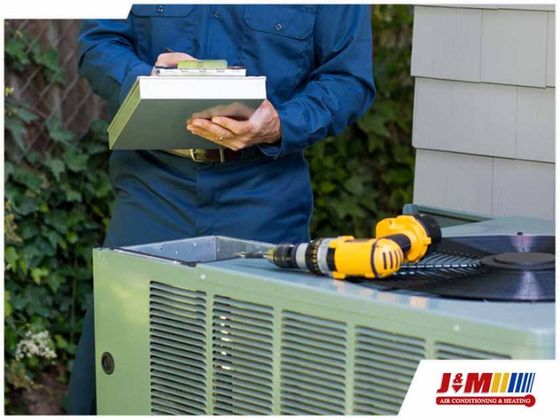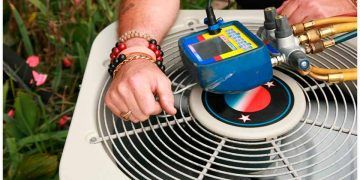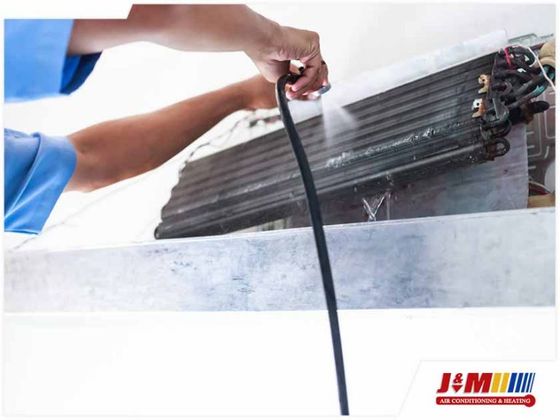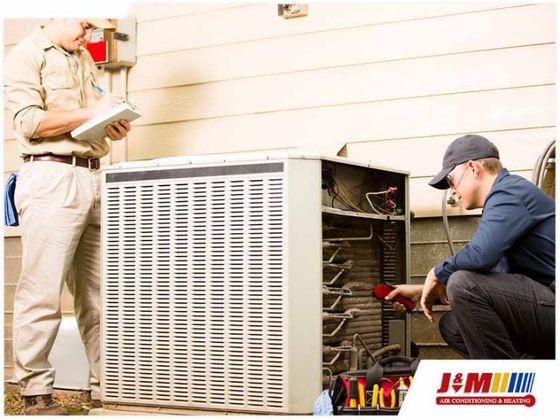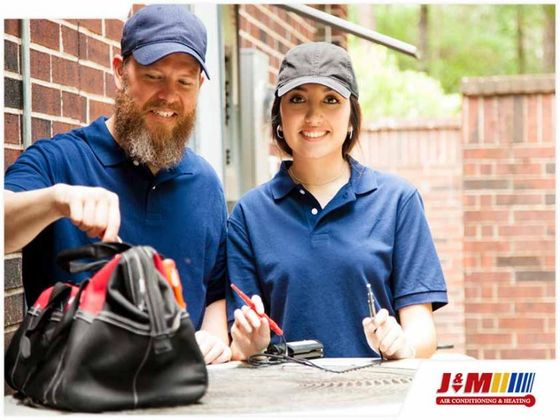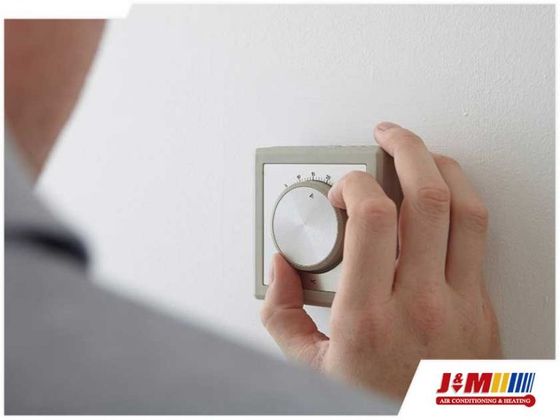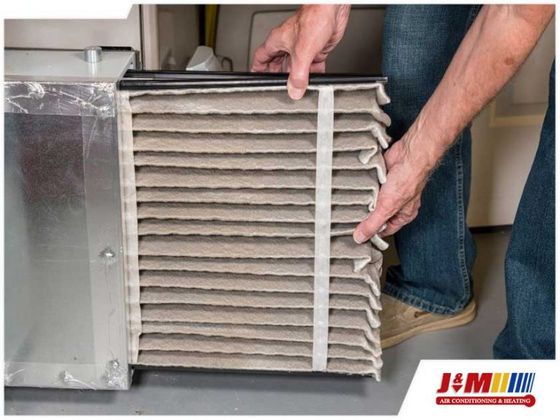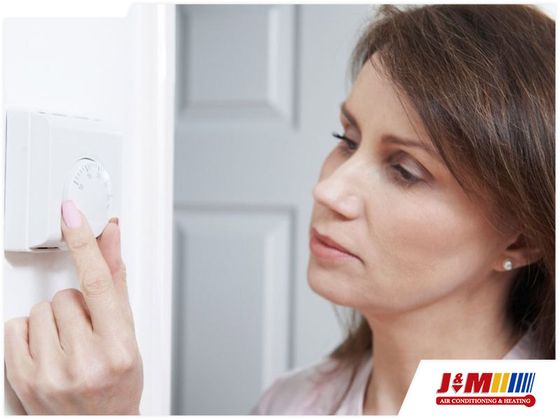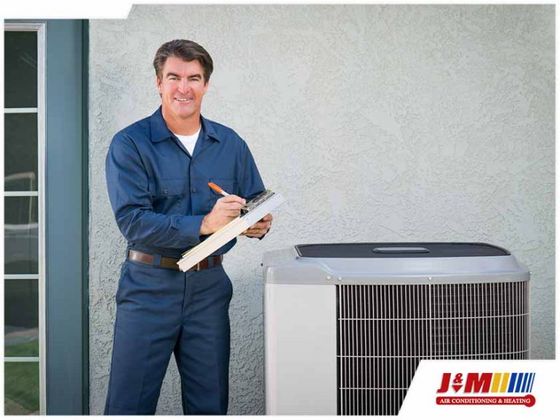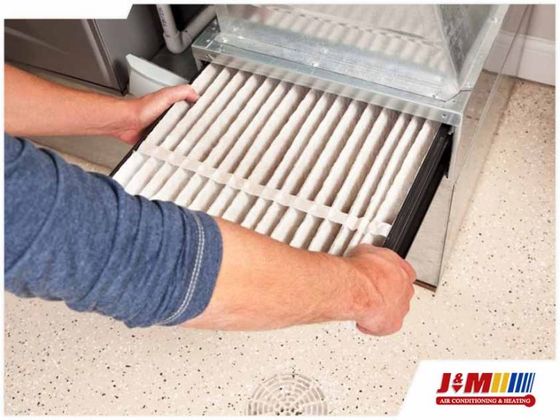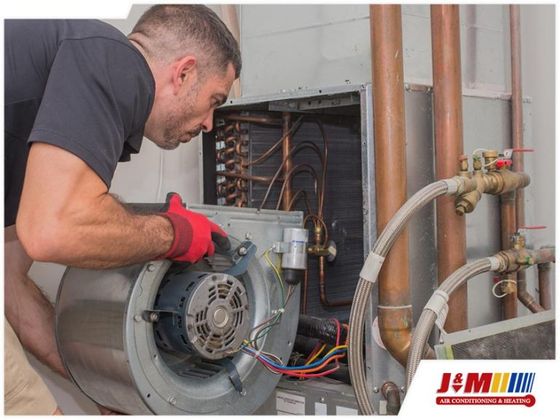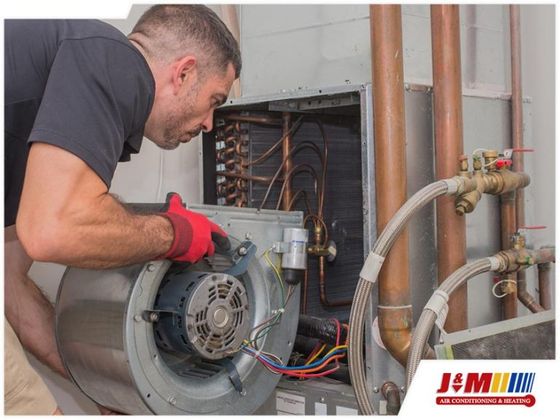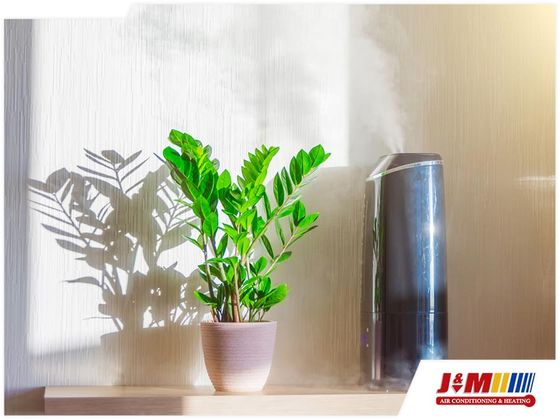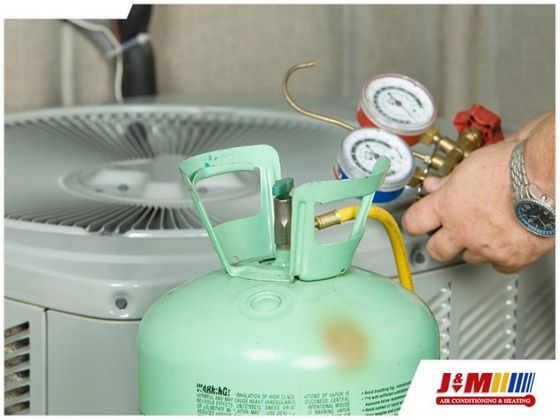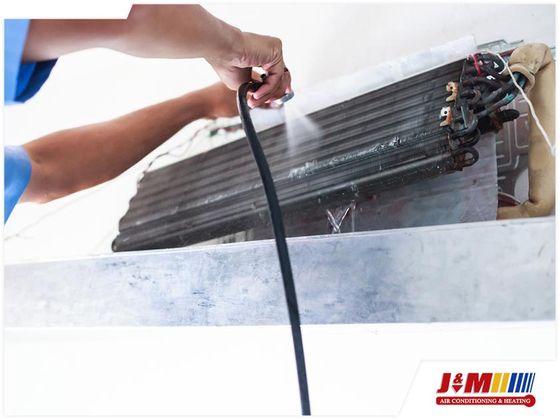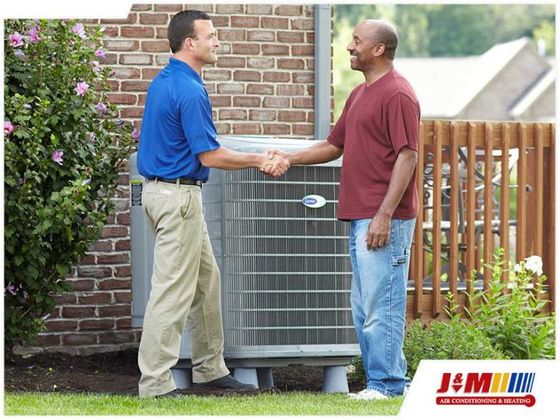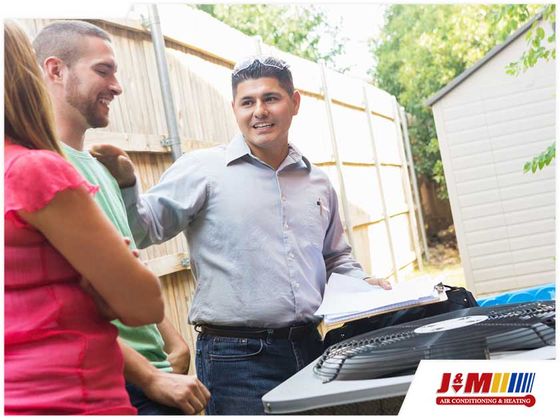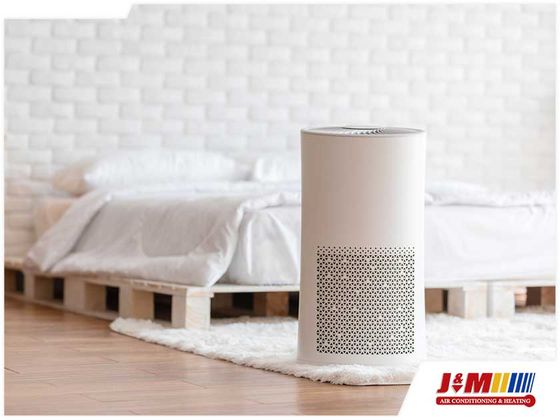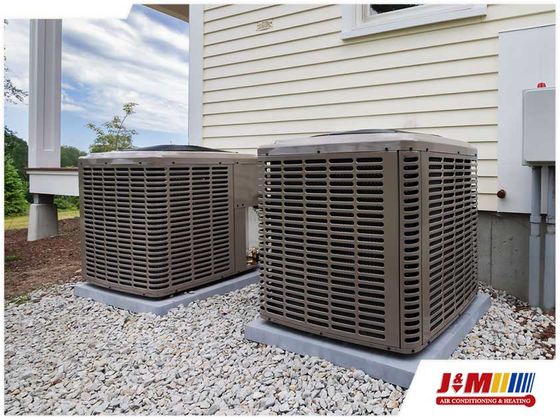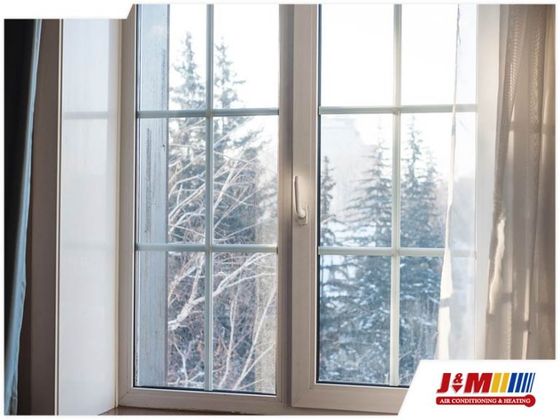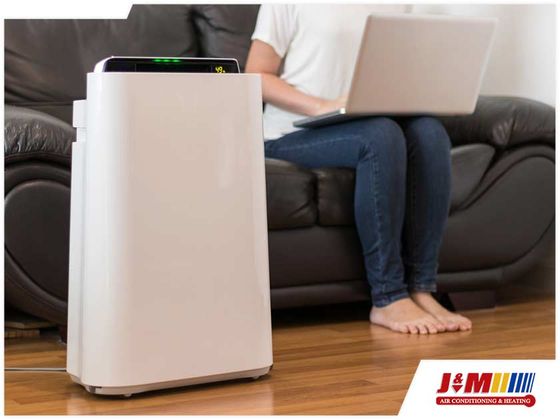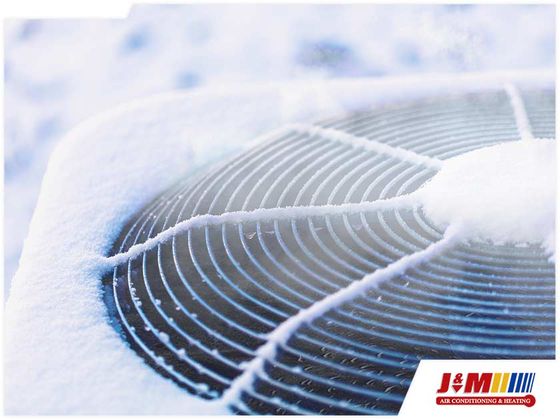Blog
Recent Updates
Why Your AC Isn’t Blowing Cold Air in Murrieta
There are few things more frustrating than your air conditioner failing on a sweltering Murrieta day. When your system is running but not blowing cold air, it's a clear sign that something is wrong. At J & M Air Conditioning & Heating, we've handled countless such calls and want to share the most common culprits we find.
moreHow to Extend the Life of Your AC with Regular Maintenance in Murrieta
Your air conditioner is a significant investment, and like any valuable asset, it requires care to ensure it lasts. At J & M Air Conditioning & Heating, we believe proactive service is the key to longevity. Regular, professional maintenance not only prevents costly repairs but also extends the operational life of your system, ensuring you get the most out of your investment.
moreCommon AC Issues Homeowners Face in Murrieta
When the summer heat arrives in Murrieta, a reliable air conditioner isn't a luxury — it's a necessity. A sudden breakdown can be a major source of discomfort and stress. At J & M Air Conditioning & Heating, we've seen it all, and we want to share our knowledge on a few common problems so you know what to look out for.
moreWhat to Do If Your Home AC Is Not Cold Enough
Is your air conditioner running but not providing the level of cooling you expect? When your AC struggles to keep up with the heat, there could be several culprits behind the insufficient cooling. Before you start shopping for a new system, try these troubleshooting steps to potentially restore your comfort without a major investment.
moreWhat to Do If Your Air Conditioner Is Not Cooling
When your air conditioner runs but fails to cool your home, it can quickly turn a pleasant day into an uncomfortable experience. Before calling for professional help, there are several troubleshooting steps you can take to potentially resolve the issue. Let's explore the most common reasons your AC might be running without cooling and what you can do about them.
moreWhy Does My LG Air Conditioner Keep Turning Off?
Is your LG air conditioner constantly shutting down unexpectedly? This frustrating issue can leave you uncomfortable, especially during hot weather. While LG units are known for their reliability, several common problems can cause them to turn off prematurely. Let's explore some potential causes and solutions to help you restore consistent cooling to your home.
moreHow Often Do HVAC Systems Need Maintenance?
At J & M Air Conditioning & Heating in San Jacinto, we know that proper maintenance of your HVAC system is crucial to ensuring its longevity and efficiency. Many homeowners in our community wonder how frequently they should schedule maintenance for their heating and cooling systems.
moreFurnace Repair Costs Explained: What Murrieta Homeowners Should Expect
As winter approaches in Murrieta, ensuring your furnace is in top condition becomes paramount. At J & M Air Conditioning & Heating, located in nearby San Jacinto, we understand that furnace repairs can be a concern for homeowners. Understanding the potential costs involved can help you budget effectively when the need arises.
moreSeasonal Furnace Maintenance: Essential Tips for Murrieta Residents
As the chilly months arrive in Murrieta, it’s crucial to prepare your furnace for the demands of winter. At J & M Air Conditioning & Heating, based in nearby San Jacinto, we understand that proper furnace maintenance can prolong the life of your heating system and ensure efficient operation. Here are four essential tips to keep your furnace running optimally this season.
moreUnderstanding Furnace Repair Costs: What Hemet Homeowners Should Know
When your heating system suddenly stops working, you're often put in a position where you must make quick decisions about repairs. At J & M Air Conditioning & Heating, we empathize with the challenges you face and aim to guide you through the repair process with clarity and confidence. As a local, family-owned business serving Hemet since 1967, we ensure your heating system is not only repaired effectively but also economically.
moreHow to Identify When Your Furnace Needs Repair: Key Signs for Murrieta Homeowners
As a community-focused HVAC company, we at J & M Air Conditioning & Heating want to ensure that homeowners in Murrieta, California can identify key signs indicating their furnace may need repair. With 40 years of HVAC experience, our family-owned business understands the importance of dependable heating, especially during cold desert nights.
moreFurnace Maintenance Tips: How to Extend the Life of Your Heating System
At J & M Air Conditioning & Heating, a local, family-owned HVAC company serving San Jacinto and Palm Desert since 1967, we understand the importance of having a properly functioning heating system, especially with the desert's temperature swings. As temperatures drop at night, the last thing you want is to discover your furnace isn't working when you need it most. That’s why our furnace maintenance tips are essential for preventing emergency furnace repairs.
moreHow to Know When It's Time to Replace Your Heating System
As winter approaches, ensuring your heating system is functioning optimally is crucial. But how do you know whether you need furnace repair or whether it's time for an upgrade? At J&M Air Conditioning & Heating, we guide you through the signs indicating it may be time to replace your heating system. Keep reading to learn more and contact us today for reliable heating services in the Hemet, Menifee, and San Jacinto areas.
more4 Common Heating System Problems and How to Fix Them
Heating system problems can surface unexpectedly, leaving you out in the cold. At J & M Air Conditioning & Heating, we want to ensure you stay warm this winter by identifying common issues and their fixes. Keep reading to learn more and contact us today to schedule a free estimate for all your furnace repair and replacement needs!
moreTop Signs Your Furnace Needs Repair: Keep Your Home Warm This Winter
As winter approaches, ensuring your furnace is in optimal condition becomes essential for your comfort and safety. A malfunctioning furnace can lead to chilly nights and rising energy bills, making it vital to identify problems early. Here are the top signs your furnace may need repairs, provided by J & M Air Conditioning & Heating.
more4 Tips for Heating Your Home This Winter
As winter approaches, ensuring your home stays warm and comfortable is essential. At J & M Air Conditioning & Heating, we understand the importance of an efficient heating system. Below you’ll find four tips to help you keep your home cozy while optimizing your energy usage this season. Keep reading to learn more, then get in touch with us about our heating services today!
moreExpert Advice: What To Do When Your AC Won't Cool But Keeps Running
In our neck of the woods, heat can be relentless, and when your air conditioning unit keeps running but fails to cool effectively, it can be frustrating. At J & M Air Conditioning & Heating, we've compiled four expert tips to troubleshoot this common issue.
more4 Air Conditioner Cleaning Tips
When temperatures rise, ensuring your air conditioner runs efficiently is crucial for your comfort and energy savings. At J & M Air Conditioning & Heating, we believe regular cleaning and maintenance can extend the lifespan of your unit and improve air quality in your home. Here are four essential air conditioner cleaning tips to keep your system in top shape.
moreEverything You Need to Know About J & M Air Conditioning & Heating
Having a reliable and efficient HVAC system is crucial for any residential property. At J & M Air Conditioning & Heating, we understand the importance of keeping your home comfortable and energy-efficient. With years of experience and a team of highly skilled technicians, we are dedicated to providing top-notch HVAC services to our customers.
moreMaintenance Saving Plans
When it comes to home upkeep and maintenance, finding the right professional services can be difficult or even overwhelming. Whether it’s cost, convenience, or consistency, making and following up with maintenance appointments is tedious and time-consuming for many homeowners. However, at J & M Air Conditioning & Heating, we are proud to offer maintenance saving plans to ensure your HVAC system is always in top shape, ensuring that your home is comfortable year round!
more4 Services We Offer at J&M Air Conditioning
When it comes to your home's HVAC system, it's important to have a reliable and experienced company to turn to for all your needs. J & M Air Conditioning & Heating in San Jacinto and Palm Desert offers a wide range of services to keep your home comfortable and energy-efficient. From installation and repairs to maintenance and tune-ups, our team of experts is dedicated to providing top-notch services to our customers.
moreCommon Reasons Your AC Is Running But Not Cooling Your Home
At J&M Air Conditioning and Heating, we understand there is nothing more frustrating than hearing your AC kick on, but not feeling the cooling relief it provides. This can be especially bad during the scorching Palm Desert and San Jacinto summers. That’s why our team is here to help you better understand what could be causing this issue and help you get your AC back to keeping your home cool and comfortable.
more4 Things to Look For in an Air Conditioning Contractor
Our team at J&M Air Conditioning and Heating understands that when it comes to your home's air conditioning system, choosing the right contractor for installation or maintenance is crucial. A reputable and skilled air conditioning contractor can ensure your system operates efficiently, saving you money and preventing unnecessary repairs down the line. Here are four essential things to look for when selecting an air conditioning contractor in the Palm Desert and San Jacinto areas for your needs.
more4 Signs Your Air Conditioner Needs Repair
As the temperature rises, your air conditioner becomes a vital appliance to keep your home comfortable. However, like any other equipment, your AC system may develop issues over time. To help you identify these issues, our team at J&M Air Conditioning and Heating, serving Palm Desert and San Jacinto, is here to discuss four common signs that it’s time to call in our experts.
moreHow to Prepare for an Air Conditioner Replacement
When the time comes to replace your air conditioner, proper preparation is key to a smooth and successful upgrade. As your trusted air conditioning contractor serving Palm Desert and San Jacinto, J & M Air Conditioning & Heating is here to guide you through the process. Our expert air conditioning services ensure that your new AC installation is seamless and efficient, keeping your home cool and comfortable.
moreWhen to Call a Professional for Air Conditioning Repair
As the seasons change and temperatures soar, your air conditioning system becomes your best ally in maintaining a comfortable indoor environment. However, when issues arise and your AC starts acting up, it's essential to know when to seek the expertise of a professional air conditioning contractor. At J & M Air Conditioning & Heating, serving the Palm Desert and San Jacinto areas, our comprehensive air conditioning services are designed to keep your home cool and comfortable, no matter the weather.
moreWhat To Do When Your AC Won't Cool But Keeps Running
When your air conditioner is running non-stop, yet fails to cool your home, it can be frustrating and uncomfortable. Before you hit the panic button, there are a few steps you can take to troubleshoot the issue. As your trusted air conditioning contractor, J & M Air Conditioning & Heating is here to provide guidance on what to do when your AC won't cool but keeps running.
more4 Common Air Conditioning System Problems
As temperatures rise, your air conditioning system becomes a vital component of your home. However, like any machinery, AC systems can encounter issues that may compromise their performance. At J&M Air Conditioning, we understand the importance of a well-functioning AC system to keep you comfortable throughout the year. Serving Palm Desert and San Jacinto, our expert team is here to help you with any AC problems you may face — reach out today!
moreHow to Know When You Need to Replace Your Air Conditioner
Is your air conditioner struggling to keep you cool during the hot summer months? It might be time to consider a replacement. J&M Air Conditioning & Heating is here to help you stay comfortable in Palm Desert and San Jacinto. Below we’re breaking down a handful of the biggest signs that indicate it's time for a new air conditioner. Learn more, then contact us for help today!
moreTroubleshooting Guide: Why Is Your AC Running But Not Cooling?
Is your AC running but failing to cool your home on scorching summer days? It can be frustrating when your air conditioning unit doesn't deliver the comfort you need. Before panicking or considering hiring a pro for AC maintenance, try these four troubleshooting tips from J&M Air Conditioning & Heating to identify and potentially resolve the issue. Can’t get the issue resolved? Get in touch today!
moreHeat Pump VS Air Conditioner? What is right for you.
Living in Southern California, the overwhelming pressure on homeowners is heat pump, heat pump, heat pump! But is a heat pump really the right choice for your home? I'll break down a few different Pros and Cons of heat pumps, and why you should or should not make the switch.
But first, WHAT IS A HEAT PUMP? Fair question, there is a fair bit of mysticism around heat pumps for the average consumer, but they are fairly simple products. In cooling mode, it works like your traditional air conditioner, using refrigerant to absorb heat from inside your home and releasing it outside. In heating mode, it simply reverses this process, taking heat from outside (even in cold weather) and bringing it inside. This as opposed to using a traditional fuel based furnace you would pair with a standard air conditioning system.
Pros of heat pump systems:
- Eliminates the use of Natural Gas or Propane to heat your home. If you have solar, this can drastically reduce your overall costs. Also, propane is costly and heat pump systems drastically decrease heating costs when switching from propane systems
- Government Incentives; California Regulators are focused on the electrification of our state, like it or not, this is simply the direction we are pushed in, a heat pump can come with tax incentives, rebates, and can also insulate you from future gas appliance regulations.
- Reliability; with a litany of new regulation in Southern California regarding gas furnaces, the products have become more complex and less reliable. The SCAQMD requires that Ultra-Low Nox furnaces be installed in all replacements. These new furnaces are fraught with reliability issues, as manufactures struggle to meet regulatory requirements. This makes heat pumps a solid choice if you want to avoid reliability concerns.
How Often Should You Have Your Air Conditioner Serviced?
Taking care of your air conditioner is essential for its longevity and optimal performance. Routine servicing not only enhances indoor air quality but also saves you from expensive repairs later on. So, how frequently should you have your air conditioner serviced? Here at J&M Air Conditioning and Heating, we're ready to assist Palm Desert and San Jacinto residents in finding the perfect servicing schedule for their AC units. Trust the expertise of our skilled HVAC contractors at J&M Air Conditioning and Heating to diagnose and resolve a wide array of HVAC problems efficiently, ensuring your system runs seamlessly. Learn more about the common issues we tackle and reach out to us to schedule servicing for your HVAC unit today!
more4 Common HVAC Issues Our HVAC Contractors Can Repair
Dealing with a malfunctioning HVAC system in the relentless heat of Palm Desert and San Jacinto can swiftly transform a mere inconvenience into a significant problem, greatly affecting the comfort and well-being of residents. The blistering temperatures in these regions make a fully operational air conditioning system not just a luxury, but an absolute necessity. Any disruption in its functionality can result in discomfort, decreased productivity, and even potential health hazards. Addressing HVAC issues promptly in these areas is crucial to preserve a cool and pleasant indoor environment, safeguarding the safety and comfort of individuals amidst the unrelenting desert heat.
Trust the expertise of our skilled HVAC contractors at J&M Air Conditioning and Heating to diagnose and resolve a wide array of HVAC problems efficiently, ensuring your system runs seamlessly. Learn more about the common issues we tackle and reach out to us to schedule servicing for your HVAC unit today!
moreSpring AC Maintenance Tips
As the chill of winter fades away and the warmth of spring begins to settle in, it's the perfect time for Palm Desert and San Jacinto residents to ensure their air conditioning system is ready to keep them cool and comfortable during the upcoming warmer months. Neglecting AC maintenance can lead to potential breakdowns and costly repairs. To help you avoid any cooling catastrophes, here are some essential spring AC maintenance tips from our team at J&M Air Conditioning and Heating.
moreHow to Find a Trustworthy HVAC Contractor In Your Area
As the premier HVAC contractors in Palm Desert and San Jacinto, J & M Air Conditioning is your go-to source for all things related to residential HVAC services. Finding a trustworthy air conditioning and home heating repair specialist can be a daunting task for many homeowners. With our years of experience and dedication to excellence, we are here to guide you through the process of selecting a reputable contractor that meets your needs.
Whether you are in need of air conditioning repairs, heating system replacements, or indoor air quality services, our team is ready to provide top-quality solutions tailored to your specific requirements. Let us help you navigate the world of HVAC contractors and find the perfect match for your home comfort needs.
moreHow to Find a Reputable AC Contractor In Your Area
When you find yourself in need of reliable air conditioning repair services, it's essential to choose a reputable air conditioning contractor that you can trust. With a myriad of options available, it can be challenging to discern which company will provide top-notch air conditioning repair, installation, and maintenance services.
At J & M Air Conditioning, we understand the importance of finding a trustworthy AC contractor who can address all your air conditioning needs promptly and effectively. In this comprehensive guide, we will share valuable insights on how to identify a reputable air conditioning repair company in your area. Whether you require immediate repairs, installation of a new system, or routine maintenance, our expert tips will help you make an informed decision when selecting an AC contractor. Reach out to our team today to find out if our air conditioning repair services are right for you!
moreFour Reasons J & M Air Conditioning Is the Top HVAC Contractor in the San Jacinto Valley
When it comes to choosing an HVAC contractor for your residential heating and cooling needs, it's essential to find a trusted and reliable company. At J & M Air Conditioning, a local HVAC company serving both Palm Desert and San Jacinto, we take pride in being a premier residential HVAC contractor in San Jacinto Valley. Read on to learn more about the four reasons why J & M Air Conditioning stands out among the competition and why we should be your go-to choice for all your heating and cooling services, and contact us today to receive a free quote!
moreThe Importance of Regular Furnace Maintenance
When it comes to staying warm and comfortable during the colder months, your furnace plays a crucial role. To ensure its optimal performance and longevity, regular furnace maintenance is essential. Our team of residential HVAC contractors in Palm Desert and San Jacinto at J & M Air Conditioning understands the importance of regular furnace maintenance and the benefits it brings. By understanding the significance of maintenance and enlisting professional furnace repair services, you can maximize the efficiency and reliability of your heating system. Contact us today to schedule furnace maintenance!
moreWhy Is My Heater Blowing Cold Air?
There's nothing worse than turning on your heater during a chilly evening, only to find that it's blowing cold air instead of the warm comfort you're longing for. If you're facing this issue, don't fret! In this blog, our team of experienced residential HVAC contractors in Palm Desert and San Jacinto at J & M Air Conditioning will dive into the potential reasons behind your heater blowing cold air and shed light on the importance of professional heater repair and furnace repair services. By understanding the underlying causes and seeking expert assistance, you can restore your heater's functionality and enjoy a cozy home once again. Contact us today to schedule heater and furnace repair services!
moreTop Rated Heating Service in Palm Desert
Having a reliable heating system is essential when it comes to keeping your home warm and comfortable during the winter months. As a leading provider of residential HVAC services in Palm Desert and San Jacinto, J & M Air Conditioning has been serving the community for years by offering top-rated heater repair and furnace repair services. We understand the importance of having a well-functioning heating system, and we are here to meet all your heating needs. Contact us today to get started!
moreJ&M Air Conditioning: Unmatched Heating Excellence in San Jacinto Valley
For over five decades, J&M Air Conditioning has stood as the undisputed leader in HVAC services in the picturesque San Jacinto Valley. As a testament to our unwavering commitment to excellence, we proudly hold the title of the top-rated heating service in the region since our establishment in 1967.
moreWhat to Expect During a Heating System Replacement
When the time comes to say farewell to your aging heating system, understanding what awaits during the replacement process is crucial. At J&M Air Conditioning, we have been serving the San Jacinto and Palm Desert, California regions since 1967, establishing ourselves as your go-to HVAC experts for a seamless transition to a new, efficient heating solution.
more4 Tips for Lowering Your Heating Bill
As the temperature drops, the last thing you want is a skyrocketing heating bill. At J&M Air Conditioning, serving Palm Desert and San Jacinto, California, we understand the importance of staying warm without draining your wallet. Here are four tips to help you lower your heating bill and keep your home cozy all winter.
more4 Furnace Maintenance Tips Every Homeowner Should Embrace
Ensuring a warm and cozy home during the colder months is a priority for every homeowner, especially in California's diverse climates. At J&M Air Conditioning & Heating, we understand the importance of furnace maintenance in sustaining home comfort. In this guide, we'll explore four essential furnace maintenance tips that every homeowner should know, helping you keep your heating system in top-notch condition.
moreHeating Hints: Recognizing Vital Signs Your System Needs Professional Repair
As the temperatures drop in California, ensuring your heating system is in optimal condition becomes paramount. At J&M Air Conditioning & Heating, we recognize the significance of a well-functioning heating system. Our expert technicians specialize in heating repair services to keep your home cozy. In this guide, we'll explore key signs indicating your heating system needs attention and how our local HVAC company can provide the necessary solutions.
moreRecognizing the 4 Signs Your Heating System Needs Replacement
As temperatures fluctuate in the diverse climates of California, from the cool breezes of San Jacinto to the warm embrace of Palm Desert, a reliable heating system is crucial. Knowing when it's time to bid farewell to your old unit is vital for ensuring consistent warmth. At J&M Air Conditioning & Heating, we're here to guide you through the four unmistakable signs that indicate it's time to replace your heating system, keeping your home cozy year-round.
more4 Reasons It's Important to Keep Your Home Heating System Well-Maintained
In the diverse climates of California, from the cool winds of San Jacinto to the warm embrace of Palm Desert, maintaining a well-functioning heating system is not just about comfort; it's a necessity. At J&M Air Conditioning & Heating, we understand the unique needs of homes across the state. We recognize the significance of routine maintenance in ensuring your heating system operates at its best, providing reliable warmth and peace of mind throughout the year.
more4 Reasons You Should Choose a Locally-Owned HVAC Contractor
When it comes to selecting an HVAC contractor for your home or business, the choices can be overwhelming. With numerous options available, it's essential to consider the benefits of choosing a locally-owned HVAC contractor. At J&M Air Conditioning, we take pride in serving the Palm Desert and San Jacinto areas with a commitment to excellence. Read all about why opting for our local HVAC expert is a decision you won't regret, then contact us to take advantage of our services today!
moreBest Heating Service in Palm Desert
As the temperatures drop in Palm Desert, the need for a reliable heating service becomes imperative. When it comes to ensuring warmth and comfort during chilly nights, J&M Air Conditioning stands out as the premier choice in the region. Our team takes pride in being your trusted partner in ensuring year-round comfort. Read all about what makes our heating services the best, then contact us to ensure your home stays warm all winter long!
moreBest Heating Service in San Jacinto
As the temperatures in San Jacinto begin their seasonal descent, the need for a reliable heating service becomes paramount. J&M Air Conditioning takes pride in being the foremost provider of unparalleled heating solutions in this vibrant community. Read all about what makes our heating services stand out, then contact us to ensure your San Jacinto home stays warm all winter long!
moreWhy Choose J&M Air Conditioning in Palm Desert for Your Heating Needs
As the crisp autumn air settles in and winter approaches, ensuring your home stays warm and cozy becomes a top priority. At J&M Air Conditioning, we understand the importance of a reliable heating system to keep you comfortable during the colder months. If you're in the Palm Desert area and in need of heating services, here are just a few reasons why you should contact our team for the job.
moreWhy Choose J&M Air Conditioning in San Jacinto for Your Heating Needs
As winter winds whisper through the valleys of San Jacinto, ensuring your home stays warm becomes paramount. Fortunately, J&M Air Conditioning stands as your steadfast partner in this endeavor. If you're seeking impeccable heating services in San Jacinto, here are a few reasons why our team should be your first choice. Contact us today to learn more!
moreWhy We’re the Best Best AC Service in Palm Desert
When it comes to choosing an AC service in Palm Desert, you want to make sure you're selecting a team that truly stands out. At J&M Air Conditioning & Heating, we take pride in being the best choice for all your cooling needs. With our experienced team, family-owned values, honest and reliable services, and dedication to keeping your home comfortable, we guarantee exceptional service that exceeds your expectations. Keep reading to learn why we’re the best in Palm Desert, then reach out to get a quote from our expert AC contractors today.
moreWhat Makes Us the Best AC Service in San Jacinto
Keeping your home cool and comfortable during the scorching summer months can be challenging, and it's important to have a reliable and efficient air conditioning system. In San Jacinto, residents and businesses have the privilege of relying on J&M Air Conditioning and Heating, the leading AC service provider in the area. With years of experience, a dedicated team of professionals, and a commitment to customer satisfaction, J&M stands out as the best choice for all your cooling needs. In this blog, we will explore the reasons why J&M Air Conditioning and Heating has earned its reputation as the premier AC service in San Jacinto. Learn more below, then get a quote for AC service today.
moreWhy Choose J&M Palm Desert for AC Service
When it comes to keeping your home cool and comfortable during scorching summer months, there's no one quite like J&M Air Conditioning and Heating. No matter your specific needs, we’re proud to offer AC service in Palm Desert, and we believe we stand out as the go-to choice for all your AC service needs. In this blog, we'll highlight the reasons why J&M should be at the top of your list when it comes to AC services. Learn more below, then get a quote for AC services today!
moreWhy Choose J&M San Jacinto for AC Service
When it comes to keeping your home cool and comfortable during hot summer months, a reliable and efficient air conditioning system plays a vital role. At J&M Air Conditioning & Heating, we understand the importance of maintaining your AC unit to ensure optimum performance. Today, we would like to share with you four key reasons why choosing J&M San Jacinto for your AC service needs is a decision you won't regret. Learn more about what you can expect below, then get a quote for AC service now!
more4 Tips for Air Conditioning Maintenance
Maintaining a properly functioning air conditioning system is essential, especially in hot climates like San Jacinto and Palm Desert, CA. Regular AC maintenance and tune-ups can prolong the lifespan of your unit and ensure optimal performance. J & M Air Conditioning is here to provide some valuable tips for effective air conditioning maintenance. Schedule an AC tune-up with our experts today!
moreWhat Happens If Your AC Unit Is Not Serviced?
In the scorching heat of San Jacinto and Palm Desert, CA, a functioning air conditioning unit is essential for maintaining a cool and comfortable living environment. Unfortunately, neglecting regular maintenance and servicing for your AC unit can have detrimental effects on its performance and longevity. Better understand the consequences of not servicing your AC unit and contact J & M Air Conditioning to schedule your AC tune-up now!
moreHow Do I Know If My AC Needs Servicing?
Living in San Jacinto or Palm Desert, CA, means relying on your air conditioning system to combat the scorching heat. But how can you be sure that your AC is in good shape? Regular maintenance and servicing are key to keeping your AC running efficiently and avoiding major breakdowns. In this blog, we'll discuss the signs that indicate your AC needs servicing and the importance of contacting a reliable air conditioning repair service like J & M Air Conditioning.
moreWhy Is My AC Running But Not Cooling?
Having an air conditioning system that runs but fails to cool your home can be frustrating, especially during the hot summer months. If you're facing this issue, you're not alone. Many homeowners encounter this problem and wonder why their AC is running but not providing the desired cooling effect!
With J & M Air Conditioning on your side, you can ensure that your AC is always running its best. Our air conditioning repair company proudly serves San Jacinto and Palm Desert, CA. For everything from air conditioning maintenance to air conditioning installation or repairs, get a quote for your needs today!
moreHow Often Should I Have My AC Serviced?
If you own an air conditioning system, regular maintenance is essential to keep it running smoothly and efficiently. Many homeowners wonder how often they should have their AC serviced to avoid breakdowns and costly repairs.
J & M Air Conditioning is here to help you understand the importance of AC maintenance and how often you should schedule it! As a trusted air conditioning repair company, we provide heating and cooling services throughout San Jacinto and Palm Desert, CA. Schedule your AC maintenance needs today!
moreHow To Choose The Right HVAC System For Your Home
When it comes to keeping your home comfortable, an HVAC system is an essential part of the equation. Keeping your home’s climate under control is a major part of how comfortable you’re going to be in every aspect of life at home. J & M Air Conditioning and Heating’s team are experts at keeping your home at the temperature that you want, here are some tips for picking the right system.
moreThe Benefits of Upgrading Your HVAC System
You’ve seen the signs. Your HVAC system isn’t operating at the level that you need it to, and you’re casting your mind back to how long ago it was installed. Maybe it’s producing odd odors, or driving your energy bill up by working too hard — probably without hitting your desired temperature anyway.
If your home or business’ HVAC system is more than 10 years old and you haven’t started looking for a replacement yet, it’s probably time to start. J & M Air Conditioning and Heat has provided the Inland Empire with HVAC maintenance and repair services for decades, and that includes when it comes time for a system to be replaced.
Here are four reasons why an upgraded HVAC system can benefit you:
moreHow to Deal With an Iced-up Heat Pump in Winter
While Hemet and surrounding cities of San Jacinto Valley, CA rarely experience temperatures below 40°F, even a mild winter can cause your heat pump to freeze up. Since this can be a nuisance, it’s essential to know how to deal with an iced-up heat pump to avoid severe damage.
moreThe Impact of a Failing Thermostat to Your Heating System
A faulty thermostat can cause a lot of problems for your heating system. It can make your system work harder than it needs to, leading to higher energy bills and premature wear and tear on your equipment. In extreme cases, a faulty thermostat can even damage your furnace.
Read on as J & M Air Conditioning & Heating—one of your trusted local heat pump inspection providers—discusses what you need to know about thermostats and HVAC systems.
moreWhat You Need to Know About Biofilms in HVAC Systems
Given how your heating and air conditioning system is one of your biggest investments, you’ll want to make sure it can continue delivering the safe and reliable performance you’ve come to expect. One way to do that is to keep tabs on its condition, which includes checking the system for biofilms. But what exactly are biofilms, and how do you deal with them? J & M Air Conditioning & Heating, a trusted HVAC specialist, shares what you need to know.
moreWhy You Should Invest in a Whole-Home Air Purifier
If you let it, poor indoor air quality (IAQ) can become a huge issue in your home. You can open your windows a few minutes every day so that allergens and other indoor air contaminants can escape outside, and fresh, healthier air can flow in. But this may not be enough. You can effectively mitigate poor IAQ by investing in an air purifier. It’s generally available in two types: an in-duct/whole-home system or a portable unit. And if you have to choose between the two? Go for the former.
moreCan Your HVAC System Help You Sleep Better?
Sleep plays a significant role in your overall health and well-being. You need sufficient rest to perform daily tasks and keep your body healthy. If you’ve been struggling to fall into a deep slumber at night, tweaking your window air conditioner or heater’s settings could do the trick.
moreHVAC Maintenance Tasks You Should Do Before Fall Begins
As the summer season winds down, you should start preparing your home for the next few months. This includes making sure your HVAC system is ready for fall. The trusted heating and air conditioning at J & M Heating & Air Conditioning share what you need to do:
moreHow to Deal With Common Indoor Air Pollutants
In a report published by the Environmental Protection Agency (EPA), the top five air quality problems in the country occur indoors. They’re caused by common pollutants that fall into one of four categories: VOCs, combustion byproducts, and biological and legacy pollutants. If not addressed correctly, they can affect the health and comfort of your households. Our air conditioning and heat pump inspection experts discuss some of the common pollutants below:
more4 Key Considerations When Buying a New Air Conditioner
Buying a new air conditioner is not as simple as buying a new television or refrigerator. It’s easy to be talked into buying the latest models, but you first have to make sure that your new air conditioner covers all the bases. J & M Air Conditioning & Heating discusses what you need to consider when buying a new air conditioner.
moreWhen to Call for Emergency HVAC Service
HVAC issues are varied, especially during the summer. You’ll need to determine which problems are urgent and which only require a standard service call. J & M Air Conditioning & Heating, a trusted air conditioning service provider in the area, explains how to make that distinction.
moreBest AC Settings for a Hot Summer
Sweltering hot summers make homeowners want to turn up their air conditioning system, but doing so also means higher energy costs on their next utility bill. Fortunately, there’s a way to strike a balance between a reasonable energy bill and a cool, comfortable home. A trusted expert in air conditioning installation and heat pump inspection, J & M Air Conditioning & Heating, shares which AC settings are best for summer.
moreA Quick HVAC Checklist When Buying a New Home
When you go shopping for a new residential property, you need to look into a few things before you make a decision. In addition to the electrical, plumbing and roofing systems of a prospective home, you should also take into consideration its HVAC system. Can it keep up with your heating and cooling needs after moving in?
moreWhy Your AC System Isn’t Providing Enough Cooling Power
The last thing you want to happen this summer is for your home to feel uncomfortable. Your air conditioning system might not be living up to its cooling capabilities, but that’s not the only thing you need to look into. Other factors can also affect your home’s comfort during the hottest months of the year. We discuss them below.
moreA Quick Guide to Buying New Filters for Your HVAC System
A well-maintained HVAC system keeps your indoor air clean and safe to breathe. But for it to stay effective, the air filter must be cleaned or replaced regularly. Dirty air filters become ineffective at keeping out pollutants, and will also inhibit proper airflow. This leads to higher energy consumption because your unit has to work harder to pump air through the dirty filters. This is why regular cleaning or replacement is recommended!
more4 Reasons Your Air Conditioner Isn’t Cooling Properly
It can be unbearably hot in California, which might prompt you to run your air conditioning full-blast the entire day. But what if your AC is running but isn’t cooling properly? Here J & M Air Conditioning & Heating, the area’s leading air conditioning service company, shares the possible causes of this issue, along with the necessary solutions.
moreWhat You Need to Know About Electrification
As one of the most popular buzzwords in the energy industry today, electrification is arguably one of the most crucial aspects of decarbonization, which is essentially making the world a better place through clean energy. Here our air conditioning and heat pump inspection experts give more insight into this concept.
more4 Dos & Don’ts of Getting a New HVAC System
A new HVAC system can help ensure the comfort of your household for many years. That’s why it’s important to choose your new HVAC system carefully. In today’s post, J & M Air Conditioning & Heating shares some of the dos and don’ts of replacing an HVAC system.
moreWhat Happens if You Don’t Use Your AC for Months?
The average home has to switch from cooling to heating as the days become colder and winter approaches, which usually leaves the air conditioner sitting unused for months. In today’s post, local AC and heat pump inspection company J & M Air Conditioning & Heating takes a look at what happens to air conditioners when they’re not used for months.
more4 Tips for Getting Your HVAC System Ready for Spring
The spring season is once again upon us, which means you should get started on your home maintenance checklist, with your HVAC system being one of your top priorities. In today’s post, local HVAC company J & M Air Conditioning & Heating shares tips on how to prepare your HVAC system for spring.
moreDoes Homeowners Insurance Cover HVAC Repairs?
Your HVAC system can break down when you least expect it. While having a heating and air conditioning service contractor that you can count on can help make dealing with such situations a lot easier, there’s still the matter of paying for the repairs. In today’s post, J & M Air Conditioning & Heating takes a look at whether or not homeowners insurance will cover HVAC repairs.
moreThe Hallmarks of a Trustworthy HVAC Technician
There are plenty of HVAC technicians in the local area, but not all have the same level of skill, expertise and customer service. To ensure you get the most out of your heating or air conditioning unit, you must work with a professional who possesses the following key qualities:
moreHow to Get Rid of Strange Smells Coming From HVAC Vents
In many households, strange smells permeating the area around the HVAC systems isn’t an uncommon occurrence. These smells do tend to go away after a while, but if they persist, you should address them immediately. After all, you don’t want you or your family members to be uncomfortable every time you use your home’s heating or cooling system.
more4 Home Heating Myths, Debunked
Despite being a common household utility, myths and misconceptions about home heating still exist. In today’s post, local heating and air conditioning service contractor J & M Air Conditioning & Heating debunks common home heating myths that could be costing you money.
moreBad Indoor Air Quality Habits You Need to Break in 2022
According to the EPA, the concentration of pollutants in indoor spaces is two to five times higher than typical outdoor concentrations. Fortunately, a few changes to your daily habits can help reduce indoor air pollutants — and what better time to get started than now? In today’s post, local heating and air conditioning service contractor J & M Air Conditioning & Heating shares the bad indoor air quality habits you need to break this year.
more3 Causes of Uneven Heating in Your Home
All homeowners have experienced temperature imbalances in their home at some point. This particular issue not only affects the comfort of your living space, it may also indicate a serious problem with your heating system. The first step to dealing with uneven heating in your home is to determine what’s causing it in the first place. J & M Air Conditioning & Heating, the premier heating and air conditioning company in the area, shares what you need to know here.
moreWhen Should You Replace Your Thermostat?
You can cool or heat your home more easily and efficiently using your thermostat. If your current one is having issues, or is old and failing, you should consider getting a new one. J & M Air Conditioning & Heating, a premier expert in heat pump inspection and maintenance in the area, suggests that you invest in a thermostat replacement when:
moreWhat Can Compromise Your HVAC System’s Heating Efficiency?
With an efficient heating and air conditioning system, your home will stay comfortable all-year-round. Scheduling regular inspections and maintenance can help ensure that your equipment performs well no matter the season. Moreover, the more you know about what can affect the performance of your HVAC system, the better you can avoid it.
moreKey Things You Should Know About Running Heat Pumps During Cold Weather
A heat pump can offer your home year-round comfort. It’s a cost-effective way to heat and cool your space, allowing you to enjoy the benefits of the equipment no matter where you live. However, there’s a misconception that heat pumps become inefficient during the colder months of the year. This shouldn’t be the case if you know how to operate one properly.
moreQuestions to Ask When Comparing HVAC Replacement Quotes
If you’re getting a new HVAC system, it only makes sense to compare quotes before making your choice. In today’s post, local air conditioning company J & M Air Conditioning & Heating shares the questions you should ask when comparing quotes for an HVAC replacement.
moreCommon Fall HVAC Mistakes You Need to Avoid
As winter approaches, you need to start thinking about winter HVAC maintenance. In today’s post, local air conditioning service contractor J & M Air Conditioning & Heating shares some common HVAC mistakes to avoid.
moreSigns of Air Handler Trouble
Air handlers are crucial to the operation and efficiency of air conditioners. They’re responsible for circulating and regulating air throughout the entire house, contributing to improved air quality levels and increased HVAC system energy efficiency.
more4 Signs Your HVAC Air Handler Needs Repairs
An air handler unit is an enclosure that’s connected to your HVAC system and distributes conditioned air through your home. Keeping it in good condition with regular maintenance and timely repairs can help ensure continuous comfort for you and your family. In today’s post, local air conditioning service contractor J & M Air Conditioning & Heating shares a look at the signs that your HVAC handler needs repairs.
moreHow to Maintain Good Indoor Air Quality When Remodeling Your Home
Remodeling projects can release various particles and pollutants into the air, some of which can harm you and your family. In today’s post, air conditioning service contractor J & M Air Conditioning & Heating shares tips on how to maintain good indoor air quality during a remodel.
moreDoes AC Refrigerant Go Bad or Run Out?
Not all homeowners understand how refrigerant works. We often receive service requests from our customers saying that their central or window air conditioner needs a refill of this liquid compound, thinking that it has either gone stale or has disappeared completely. Nothing could be further from the truth, however.
moreAir Conditioning Parts That Need Extra Care This Summer
Air conditioners see peak usage in the summer season. This puts greater stress on the system and increases the risk of a breakdown. In today’s post, local air conditioning service contractor J & M Air Conditioning & Heating shares the air conditioning components that will need some extra care this season.
moreHow Carrier® Air Conditioners Can Benefit You
Out of all the available heating and cooling brands available, Carrier® is hard to beat. It’s always been synonymous with home comfort, with its systems found in millions of homes around the world! With over a century of heating and cooling innovation, you can be sure that Carrier will keep you and your family comfortable for years to come. Our air conditioning and heat pump inspection experts share their insight below.
moreUnderstanding Common Heat Pump False Alarms
If you’re a new heat pump owner, it’s not uncommon to mistake operational differences for real-life problems, to the point that you think you need to call in a technician to make repairs. In this article, a heating and air conditioning service contractor clears up some of these misconceptions so that you can have peace of mind when running your heat pump.
moreHOAs & HVAC Systems
Whether you’re planning to purchase a home in a neighborhood with a homeowners association (HOA) or are living in one already, it’s important to know if there are certain requirements that could affect your home’s heating and cooling system. In this article, a heat pump inspection company discusses a few things you need to keep in mind when choosing your heating and cooling systems.
moreWhen to Get an Air Purifier
The U.S. Environmental Protection Agency says that air purifiers can help improve your home’s indoor air quality. While having a well-sealed space is great for energy efficiency, it can compromise the quality of the air you breathe. An air purifier can help prevent pollutants from accumulating in your living spaces. A local air conditioning expert shares some signs that you probably need to get an air purifier in this post.
moreAnswering Frequently Asked Questions About Heat Pumps
Some homeowners use a heater and window air conditioner to keep their family comfortable all-year-round. On the other hand, many homes and businesses in the U.S. use heat pumps for their heating and cooling needs. If you have a heat pump, knowing more about your equipment can help you take better care of it.
Continue reading to discover the answers to some of the most frequently-asked questions about heat pumps.
moreAre you a DIY’er?
We are here for you! J & M Air Conditioning has all the parts you need to keep your heating and air conditioning system running it’s best. We also offer free capacitor testing and expert advice. Stop by our office in San Jacinto or our new location in Palm Desert!
moreManaging Indoor Humidity Levels During the Winter
Regardless of the climate in your local area, indoor humidity can have an impact on your home’s comfort levels and the proper functioning of your HVAC system. In today’s blog, the heating and air conditioning experts at J & M Air Conditioning & Heating explain what you need to know about managing indoor humidity levels in the winter.
more4 Home Improvements to Give Your Energy Efficiency a Boost
There’s more to improving your home’s energy efficiency than just installing ENERGY STAR® windows and lighting fixtures. Some improvements require a significant investment, but they can make a huge difference in reducing your monthly energy bills. Local AC and heat pump inspection pros J & M Air Conditioning & Heating takes a look at four of them below:
moreAre Air Scrubbers Better than Air Purifiers?
Believe it or not, even with a recently-cleaned and fully-functional air conditioning system, you’re exposed to dust and particles two to five times more concentrated indoors than outdoors. This makes sense, because outside, contaminants are more or less “diluted” by the atmosphere. These numbers are reported by the Environmental Protection Agency in their pursuit to improve indoor air quality in many homes across the country.
Poor indoor air quality, or IAQ, is linked to a number of respiratory conditions like asthma and allergic reactions. It can even cause non-respiratory ailments like stress and headaches. The best way to improve your IAQ level is with the use of either an air purifier or an air scrubber. Here our HVAC pros at J&M explain what these are, as well as the difference between them.
more4 Common Air Conditioner Odors & What They Mean
If you just turned your air conditioner on for the season and there’s an unpleasant smell emanating from it, this could be indicative of a problem. In today’s post, local air conditioning service contractor J & M Air Conditioning & Heating discusses common air conditioner odors and what they mean.
moreSeasonal Allergies & How to Avoid Them
The risk of seasonal allergies becomes higher when your HVAC system’s filters aren’t properly cleaned and maintained. This can affect your family’s health over time, as well as cause your HVAC system to work harder than necessary and lead to more breakdowns down the road. If you find yourself constantly sneezing or coughing in your home, it may be best to have your system cleaned and filters replaced. Our air conditioning team explains what you need to know here:
moreIs Your Heat Pump Producing Smoke?
Heat pumps function differently than a traditional heating system or window air conditioner. Rain and snow can lead to certain behaviors in the unit that may cause alarm in first-time heat pump users. Most homeowners tend to call for emergency HVAC service as soon as they notice something strange with their heat pump; however, by knowing which things are normal and which aren’t, you can save yourself a lot of trouble and panic.
One example of strange heat pump behavior is when the outdoor unit appears to be generating smoke. Users often assume that the smoke is coming from a malfunctioning fan motor because the fans usually stop working when this happens, but fortunately the truth is actually a bit less concerning. Here our experts at J&M explain why a smoking heat pump may not be a problem.
more